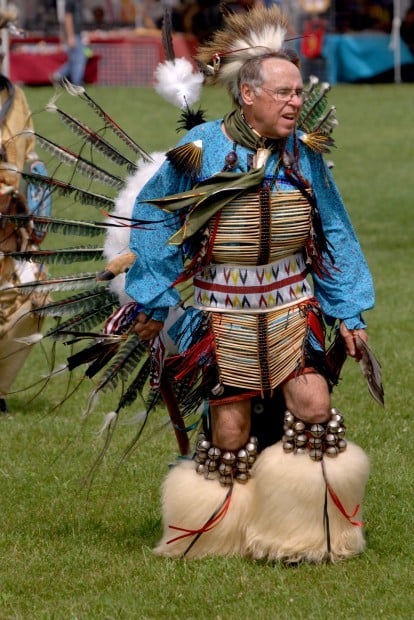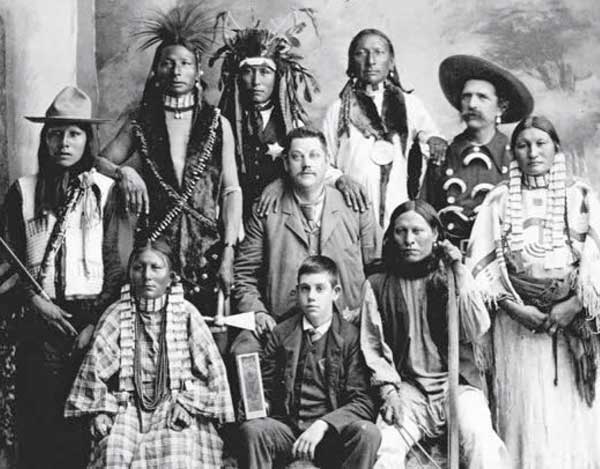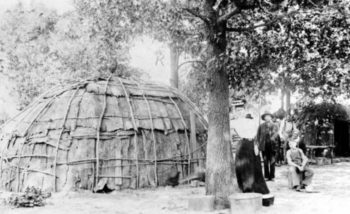The Enduring Spirit of the Kickapoo: A Journey Through History, Culture, and Resilience
The Enduring Spirit of the Kickapoo: A Journey Through History, Culture, and Resilience

The Kickapoo, a Native American tribe with a rich and complex history, have endured centuries of hardship and change while preserving their unique cultural identity. Their journey, marked by resilience and adaptability, has taken them across vast landscapes, from the Great Lakes region to the heart of Mexico, and ultimately to the United States. This article delves into the fascinating history, cultural practices, and ongoing struggles of the Kickapoo people, highlighting their unwavering spirit and commitment to their heritage.
Origins and Early History:
Related Articles: The Enduring Spirit of the Kickapoo: A Journey Through History, Culture, and Resilience
- The Seminole Tribe Of Florida: A Story Of Resilience And Economic Success
- Unmasking The Wealth: Who Is The Richest Native American Tribe?
- The Allure Of Blue Eyes: Exploring The Genetics And History Of Shah Blue-Eyed Individuals
- Oklahoma’s Wealthy Legacy: Top 10 Richest Native American Tribes
- The Richest Tribes In America: A Look At Wealth, Sovereignty, And Economic Development
The Kickapoo, meaning "those who move about" in their own language, were originally part of the Algonquian language family, residing in the Great Lakes region of North America. They were a nomadic people, relying heavily on hunting, fishing, and gathering for survival. Their territory spanned parts of present-day Wisconsin, Michigan, Illinois, and Indiana.
Forced Removal and the Trail of Tears:
Like many Native American tribes, the Kickapoo faced relentless pressure from westward expansion and European colonization. In the early 19th century, the United States government forced them from their ancestral lands, leading to a series of treaties and forced removals. The Kickapoo, along with other tribes, were subjected to the devastating Trail of Tears, a forced migration that resulted in immense suffering and loss of life.
Migration to Mexico and the Struggle for Survival:
Driven from their original territory, the Kickapoo sought refuge in Mexico, finding temporary solace in the states of Coahuila and Texas. However, their journey was far from over. They faced constant conflict with Mexican authorities and other tribes, struggling to maintain their autonomy and cultural traditions. The Kickapoo, known for their fierce independence, resisted assimilation and fought for their survival in the harsh Mexican landscape.
The Kickapoo in the United States:
In the late 19th century, a small group of Kickapoo returned to the United States, settling in Oklahoma. This marked the beginning of a new chapter in their history, one characterized by attempts at self-governance and the preservation of their cultural heritage. However, the struggle for recognition and rights continued.
Culture and Traditions:

The Kickapoo culture is deeply rooted in their nomadic lifestyle and their connection to the natural world. Their traditional beliefs, customs, and practices have been passed down through generations, embodying a profound respect for the Earth and its resources.
- Language: The Kickapoo language, a member of the Algonquian family, is a testament to their unique identity. Despite the challenges of assimilation and language loss, efforts are underway to revitalize and preserve the language.
- Art and Crafts: The Kickapoo are known for their exquisite beadwork, basketry, and pottery, which often feature intricate designs and symbolic motifs. These crafts represent their artistry and connection to their heritage.
- Ceremonies and Rituals: The Kickapoo hold a variety of ceremonies and rituals throughout the year, celebrating important events and honoring their ancestors. These ceremonies often involve dancing, singing, and storytelling, fostering a sense of community and cultural continuity.

Challenges and Resilience:
Despite their resilience and adaptability, the Kickapoo continue to face challenges in the 21st century. Issues such as poverty, unemployment, and limited access to healthcare persist, impacting their well-being and future prospects.
- Economic Development: Finding sustainable economic opportunities remains a significant challenge for the Kickapoo. They are actively pursuing initiatives to promote economic self-sufficiency, including tourism, agriculture, and small business development.
- Environmental Issues: The Kickapoo have a deep connection to the land, and they are actively involved in environmental protection efforts. They are concerned about the impact of pollution, climate change, and resource depletion on their traditional lands.
- Cultural Preservation: Maintaining their cultural identity in the face of assimilation and globalization is a constant struggle. The Kickapoo are actively working to revitalize their language, traditions, and arts, ensuring that their heritage endures for future generations.

The Future of the Kickapoo:
The Kickapoo people have a long and storied history, marked by resilience, adaptability, and a strong sense of cultural identity. They continue to face challenges, but their unwavering spirit and commitment to their heritage provide hope for a brighter future. Their journey serves as a reminder of the enduring strength and determination of Native American tribes in the face of adversity.
FAQ about the Kickapoo Indians:
1. Where are the Kickapoo located today?
The Kickapoo have three recognized tribal nations:
- The Kickapoo Tribe of Oklahoma: Located in the state of Oklahoma.
- The Kickapoo Tribe of Kansas: Located in the state of Kansas.
- The Kickapoo Nation of Mexico: Located in the state of Coahuila, Mexico.
2. What is the Kickapoo language?
The Kickapoo language is a member of the Algonquian language family. It is currently considered critically endangered, with only a small number of fluent speakers remaining.
3. What are some of the traditional crafts of the Kickapoo?
The Kickapoo are known for their intricate beadwork, basketry, and pottery, often featuring symbolic designs and motifs.
4. What are some of the challenges faced by the Kickapoo today?
The Kickapoo continue to face challenges such as poverty, unemployment, limited access to healthcare, and the preservation of their cultural heritage.
5. What are the Kickapoo doing to preserve their culture?
The Kickapoo are actively working to revitalize their language, traditions, and arts, including language immersion programs, cultural festivals, and the promotion of traditional crafts.
6. What is the significance of the Kickapoo history?
The Kickapoo’s history is a testament to their resilience, adaptability, and commitment to their cultural identity in the face of adversity. Their story highlights the enduring strength and determination of Native American tribes throughout history.
7. How can I learn more about the Kickapoo?
You can learn more about the Kickapoo by visiting their tribal websites, attending cultural events, and supporting organizations dedicated to the preservation of their heritage. You can also read books and articles about their history and culture.

Closure
Thus, we hope this article has provided valuable insights into The Enduring Spirit of the Kickapoo: A Journey Through History, Culture, and Resilience. We hope you find this article informative and beneficial. See you in our next article!


